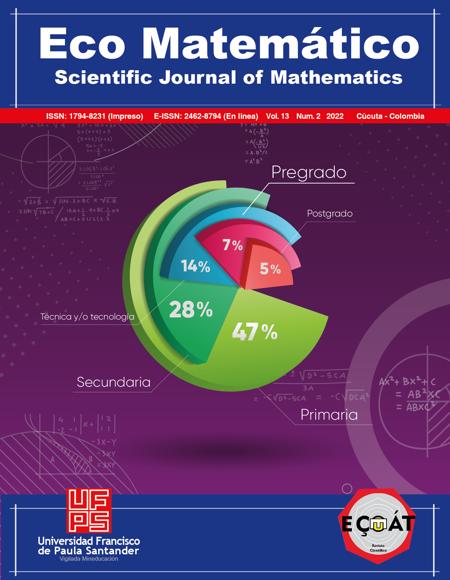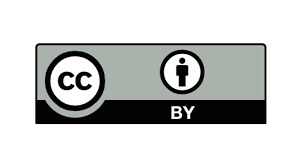A short heuristic-mathematical Model of Social Mobility based in Kermack-McKendrick hypothesis
Un breve modelo heurístico-matemático de movilidad social basado en la hipótesis de Kermack-McKendrick
Main Article Content
The following manuscript analyzes the relationship between social mobility, heuristics, and the proposal of a model of epidemiological origin (Kermack-McKendrick Hypothesis -KMH), which can become a tool for the analysis of conditions improve aspects related to income distribution as a fundamental tool for the advancement of social mobility. The text considers that the proposed model considers the possibilities embodied by the contribution of other disciplines to economic science and mainly concerning the study of the factors that affect social mobility, generally associated with variables such as the level of education. Likewise, heuristics constitute an essential tool to search for new ways of analyzing the economic reality, as far as social mobility is concerned.
Downloads
Article Details
Atkinson, A. (1997). Public Economics in Action. Oxford: University Press.
Beamish, T. and Woolsey, N. (2010). “Social Heuristics: Decision Making and Innovation in a Networked Production Market”. Thomas D. Working Paper #0056 Thursday, January 28. DOI: https://doi.org/10.2139/ssrn.1533429
Boudon, R. (1974). Education, opportunity, and Social Inequality: Changing Prospects in Western Society. John Wiley & Sons.
Deary, I. Taylor, M. Hart, C. Wilson, V. Davey S. George, B. David and Starr, J. (2005). “Intergenerational social mobility and mid-life status attainment. Influences of childhood intelligence, childhood social factor, and education”. Intelligence 33(5): 455-472. DOI: https://doi.org/10.1016/j.intell.2005.06.003
Dongmei, C. Moulin, B. and Wu, J. (2014). Modelling the Spread of Infectious Diseases: A review. Analyzing and Modelling Spatial and Temporal Dynamics of Infectious Disease. First Edition john Wiley and sons, Inc.
Fields, G. (2001). Distribution and Development a new look at the developing world. London: MIT Press. DOI: https://doi.org/10.7551/mitpress/2465.001.0001
Garay, L. (2018). (In)-Movilidad Social Democracia: Algunas perspectivas teóricas analíticas empíricas a propósito de la experiencia de países de la OCDE y de Colombia. Bogotá: Ediciones desde Abajo.
Goldthorpe, J. (1980). Class Mobility in Modern Britain: A Reply to Crompton. Sociology, 14(1), 121–123. https://doi.org/10.1177/003803858001400109 DOI: https://doi.org/10.1177/003803858001400109
Goldthorpe, J. Llewellyn, C. and Payne, C. (1987). Social Mobility and Class Structure in Modern Britain. England: Clarendon Press.
Grusby, D. and Cumberworth, E. (2010). "A National Protocol for Measuring Intergenerational Mobility". Workshop on Advancing Social Science Theory: The Importance of Common Metrics. Washington, D.C.: National Academy of Science. Archived (PDF) from the original on 19 July 2014. Retrieved 15 July 2014.
Farris, F. (2010). “The Gini Index and measures of Inequality”. The American Mathematical Monthly. December 117 pp 851-864.https://doi:10.4169/000298910X523344 DOI: https://doi.org/10.4169/000298910x523344
Gasiorowicz, S. (1974). Quantum Physics, John Wiley and Sons, Inc., New York.
Gini, C. (1952). Teorías de la población. Ed. Aguilar.
Kamrava, M. (1993). Politics and Society in the third world. London: Routledge.
Kakol, M. Nielek, R. and Wierzbicki, A. (2014). “Modelling Impact of Social Stratification on the Basis of Time Allocation Heuristics in Society”. In: Kennedy W. G., Agarwal, N, Yang, S.J. (Eds) Social behavioral-Cultural Modeling and Prediction. SBP 2014. Lecture Notes in Computer Science, vol 8393. Springer, Cham. https://doi.org/10.1007/978-3-319-05579-4_35 DOI: https://doi.org/10.1007/978-3-319-05579-4_35
Kermack, W. and McKendrick A. (1927). “A contribution to the mathematical theory of epidemics”. Proceedings of the Royal Society of London, Series A, 115(772): 700-721. DOI: https://doi.org/10.1098/rspa.1927.0118
Leszek, K. (1974). “My correct Views on Everything”. The Socialist Register, pp. 1-20.
Marqués, I. (2015). La movilidad Social en España. Madrid: Catarata.
McGinnis, R. (1968). “A Stochastic Model of Social Mobility”. American Sociological Review, Vol. 33, No 5 (Oct., 1968): 712-722. DOI: https://doi.org/10.2307/2092882
Müller, H. (1987). Aspectos metodológicos acerca del trabajo con ejercicios en la enseñanza de la matemática. Folleto mimeografiado. Instituto Central de Ciencias Pedagógicas. C. de la Habana.
Müller, H. (2015). El trabajo heurístico y la ejercitación en la enseñanza de la Matemática en la EGPL. Santiago de Cuba. Folleto editado por el ISP “Frank País García”.
OCDE. (2018). A Broken Social elevator? How to promote Social mobility. OCDE Publishing, Paris.
Patman, C. (1983). Economic Planning: Paths to Development. In The third World problems and perspectives Mountjoy, Alan Ed. Hong Kong: The Macmillan Press LTD.
Polya, G. (1962). Mathematical Discovery. On understanding, learning, and teaching problem solving. Vol. 1. Ed. John Wiley and Sons, Inc. USA.
Polya, G. (1964). How to solve it? Rinehart and Winston Inc., N.Y., U.S.A.,151.
Rothbard, M. (1995). “An Austrian Perspective on the History of Economic Though”. Volume 2, Edward Elgar Publishing Ltd, Chapter 12, pp. 382-384.
Payne, G. (1989). "Social Mobility." The British Journal of Sociology 40, no. 3 471- 92. Accessed June 30, 2021. Doi:10.2307/591043. DOI: https://doi.org/10.2307/591043
Romanycia, M. and Pelletier, J. (1985). “What is a heuristic?” Computational Intelligence 1(1):47-58. DOI: 10.1111/j.1467-8640.1985.tb00058.x DOI: https://doi.org/10.1111/j.1467-8640.1985.tb00058.x
Rowlingson, K. (2011). “Does income inequality cause health and social problems”? Joseph Rowntree Foundation the Homestead 40 Water End York YO30 6WP. Retrieved from: https://www.jrf.org.uk/report/does-income-inequality-cause-health-and-socialproblems
Tinbergen, J. and Bos, H. (1962). Mathematical Models of Economic Growth. McGraw Hill.
Tversky A. and Kahneman, D. (1974). “Judgment under Uncertainty: Heuristic and Biases”. In: Science, Nez Series, 185(4157). (Sep. 27. pp. 1124 – 1131). DOI: https://doi.org/10.1126/science.185.4157.1124
Tversky A. & Kahneman, D. (1979). Prospect Theory: An Analysis of Decision under Risk. En: Econométrica, 47(2). (Mar. pp. 263 - 292). DOI: https://doi.org/10.2307/1914185
Tversky A, & Kahneman, D. (1981). The Framing of Decisions and the Psychology of Choice. En Science, New Series, 211(4481). (Jan. 30, 1981), pp. 453 - 458. DOI: https://doi.org/10.1126/science.7455683
Von Mises, L. [1957], (2007). Theory and History: An Interpretation of Social and Economic Evolution. Auburn, Alabama: Ludwig von Mises Institute.
Wilkinson, R. Pickett, K. (2009). The Spirit Level: Why Greater Equality Makes Societies Stronger. Bloomsbury.







